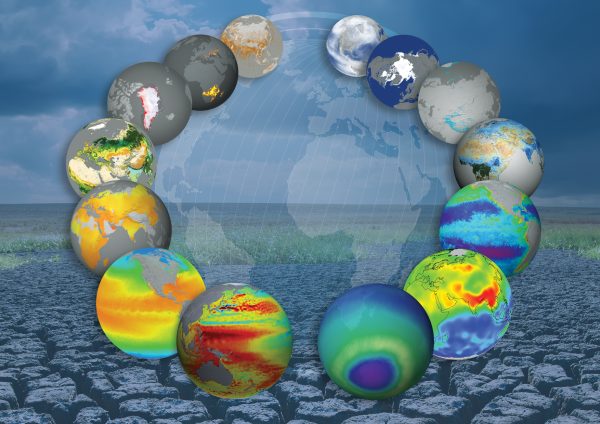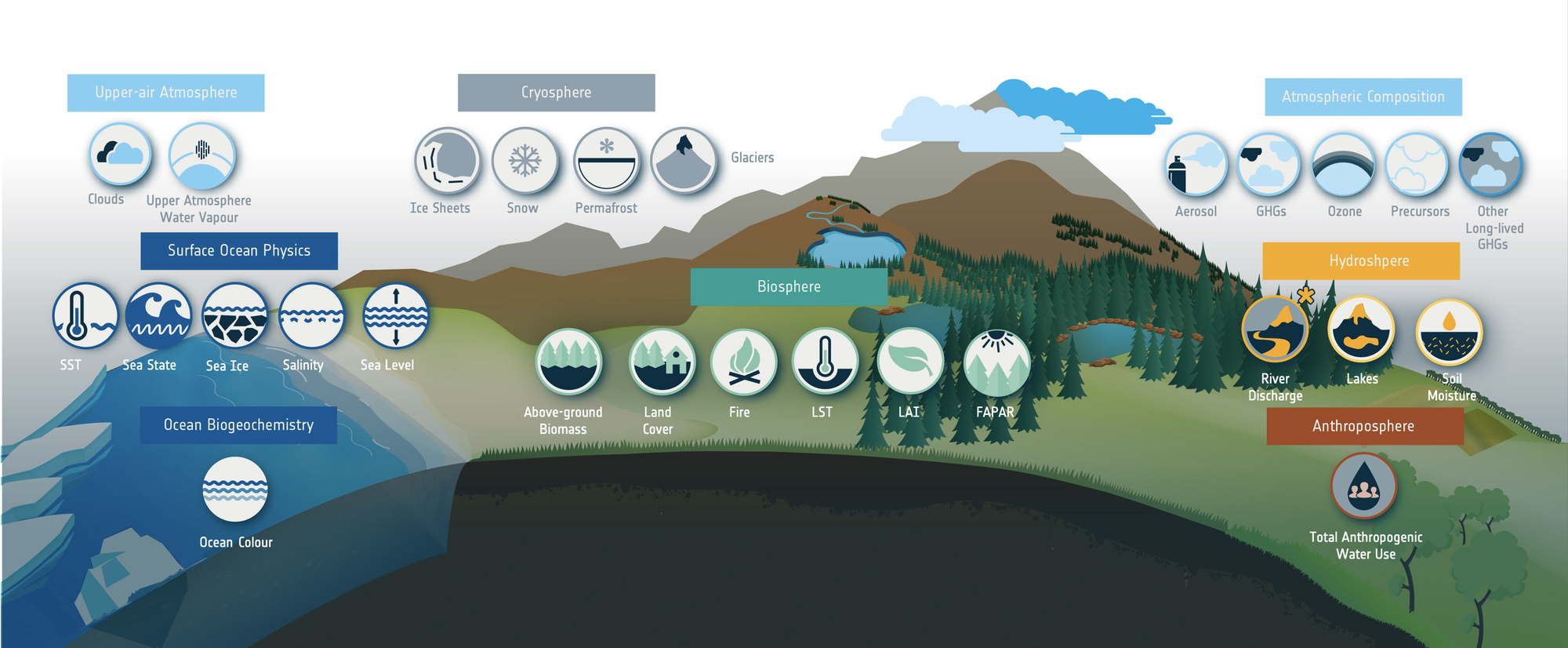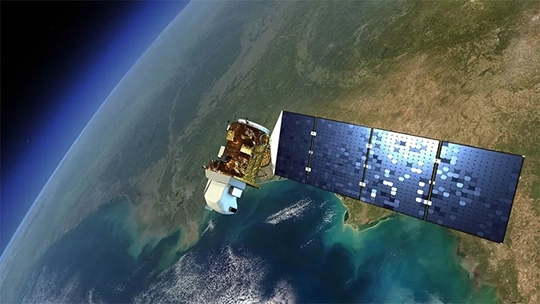
What are ECVs
Essential Climate Variables

Climate is incredibly complex. Physical processes, chemical reactions and living things interact to create natural cycles that play out over a day, a year, decades or thousands of years. Examining each contribution can tell us part of the story, but the computer models climate scientists use allow us to explore how changes in one affects each of the others and, ultimately, how the climate might change in the future.


Earth System
A certain number of these factors are known as essential climate variables, or ECVs.
- Each ECV is a critical component of the climate system or/and clearly changes as the climate changes.
- We can get the value of each ECV at points across the whole world, either by directly measuring it or by using well-understood science to calculate values from reliable data.
- Collecting and storing accurate information – including related historical data – about each ECV is financially feasible.

Photo credit @ESA
ECVs
There are currently 55 ECVs covering aspects of the atmosphere, oceans, ice, land, freshwater, living things and human activity. Some ECVs are actually made up of several different measurements (each known as a product).
For example, the lakes ECV includes area, water level, surface temperature, ice thickness and cover and reflectance. You can see the full list on the website of the Global Climate Observing system (GCOS)

Satellite ECVs
More than half of the ECVs are measured, or rely on data from, Earth observation satellites because:
- Space is the ideal vantage point from which to collect data from across the globe: it would take thousands of people to collect the information in a single satellite image if they were taking measurements on the ground, in boats or even using drones and aircraft.
- Instruments on satellites can collect data from remote or inaccessible places such as the polar regions and the middle of the ocean.
- Satellites can make measurements at regular intervals over a period of years. Thanks to overlapping measurements from several families of satellite instruments, we now have detailed records, covering decades, for many ECVs.
The European Space Agency (ESA) Climate Change Initiative (CCI) project uses satellite data to produce datasets related to 27 ECVs.
Education Resources
Earth observation data, images and contexts are a great way of delivering parts of the core curriculum in a new way.
You do not have to prepare lessons using them for yourself: there are a growing number of ready-to-use resources available that contain everything you need to give it a go.


